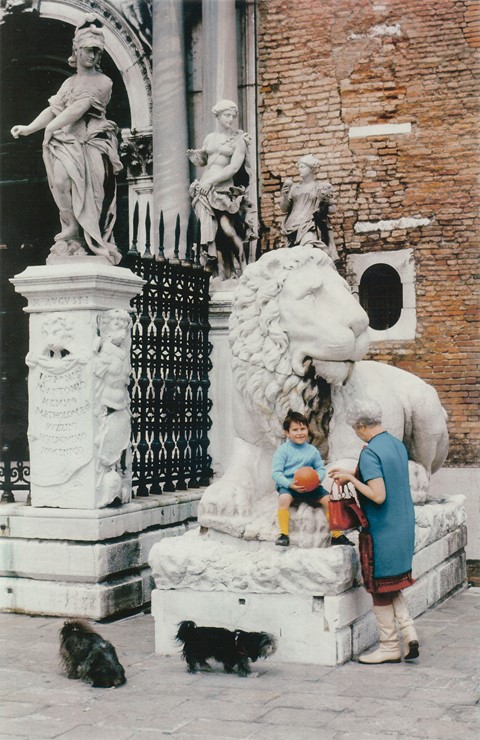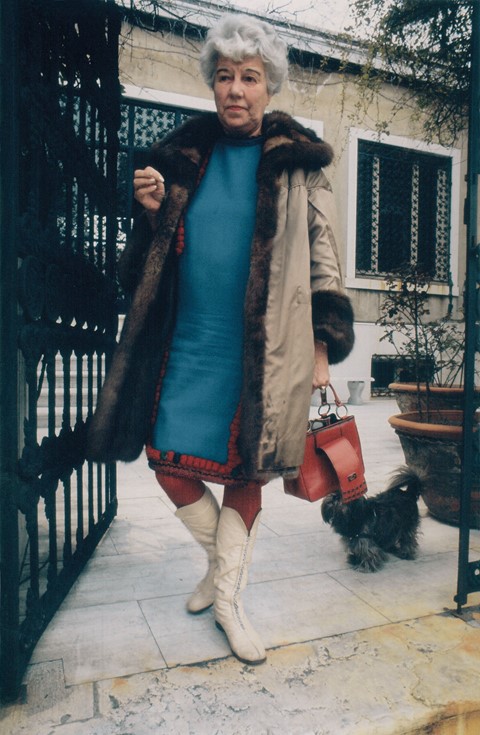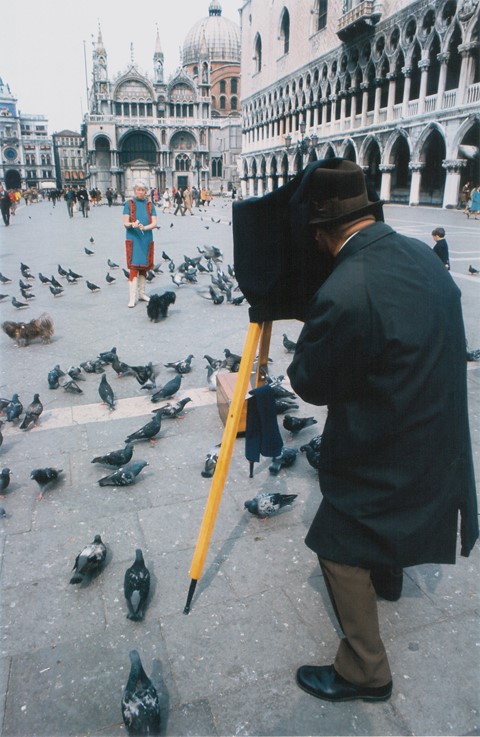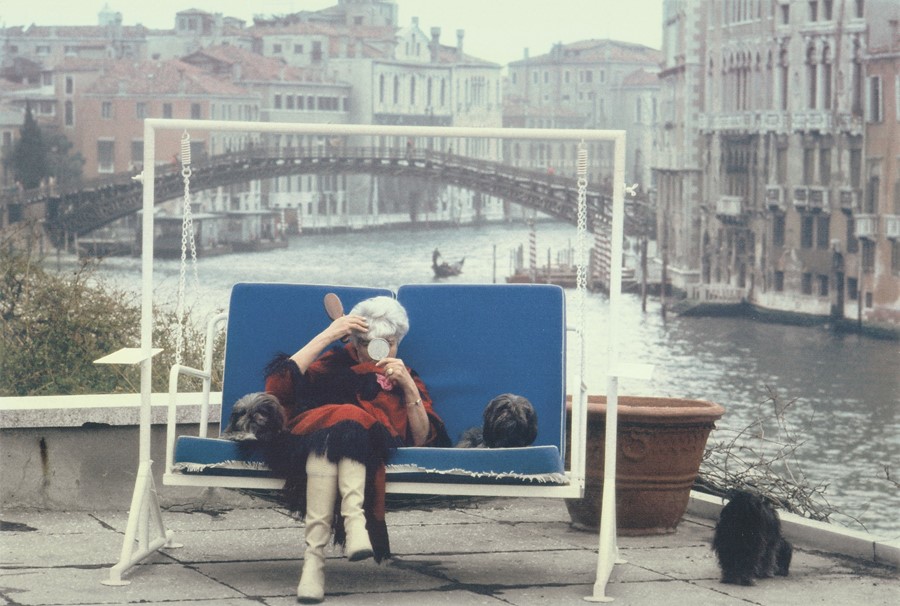She was one of the 20th century’s best-loved art collectors – and as a new book demonstrates, she was full of surprises
When her friend, the novelist Antonia White, complimented her on an expensive scarf, the art collector and heiress Peggy Guggenheim replied “this – I use it for a dust-cloth”. It’s a retort that reveals a lot about the decadence and simultaneous unease of the world’s most renowned 20th-century art collector. Although she often featured as a subject for famous photographers over the years (Man Ray and Ida Kar to name only two) the images by Stefan Moses in a new compendium of his visits to Venice are among the most intimate and revealing of art world royalty.
The series, made between April 1969 and November 1974, illustrates Guggenheim’s life with snapshots that form a filmic tour of her Venetian day-to-day. These “pictorial narratives” – as Thomas Elson puts it – provide more insight than a solo portrait, each photo “a miniature chapter in its own right”. Art surrounds her at every turn; it’s a natural element of her environment: turquoise walls, the curls and spirals of a silver Alexander Calder headboard, Venini lamps designed by Carlo Scarpa. Moses captures Peggy living among her works of art, and each portrait radiates intimacy, Peggy both aware and unaware of the camera’s gaze. She sits on a quattrocento cassapanca while making a telephone call: behind her a Kandinsky, before her a Boccioni. Later we see her perched on a chair under a Picasso as visitors mill around her sitting room in flares and Missoni stripes. There’s a conversation occurring between Moses’ camera and its curious subject. Whether she’s strutting through Piazza San Marco feeding pigeons in red cowboy boots, or reading at her desk with vivid penciled-on-eyebrows, she captivates.
As a photographer famed for his use of dramatic monochrome contrasts, it’s striking that Moses made the decision to pack colour film for his Leica camera when visiting the floating city and its American queen. Although he published many images of Guggenheim in his signature style, it is the vivid life these coloured shots capture that lingers. Guggenheim lounges on a white sofa as artists present their work to her; she sits before a childhood portrait in a bright green 1960s shift dress, her shock of white hair matched to knee-high leather boots and a loyal Lhasa Apso at her feet. Her New York reputation, bolstered by the gossip columns of the day, highlighted her affection for ankle-length bobby socks and bright pillar-box red. Never failing to live up to this, she sits smiling for Moses with stocking-clad calves quasi-camouflaged against the scarlet synthetic leather of a motoscafo seat. Her eyes are sheltered behind her signature butterfly sunglasses (designed by the sculptor Edward Melcarth), a faithful canine companion on her lap. Her smile is wide: she’s a woman in her element.
Later we see these same golden shades neatly stacked with their comrades in her bedroom on the surface of a cabinet. It’s this attentiveness that gives Moses’ work its power. He gives space to details that enhance Guggenheim’s vast personality. Her life was an extended process of self-fashioning, saturated with the talents she saw around her. What Moses manages to explore is the woman behind this carefully curated persona. We see not only the composure but the breaks of laughter, the quiet moments of conversation with small children playing by the Arsenale’s stone lions, solo lunches served on an emerald green tray. A bright red bag sitting below an oil painting becomes metonymic of its owner: like Peggy it refuses to remain unnoticed. A block of bright clashing colour against a canvas of faded hues.




Encounters With Peggy Guggenheim by Stefan Moses is out now, published by Hardie Grant.
